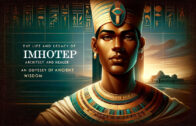INVENTION SCHOOL STORY – PATO’S BEES
MEMBERS & VISITORS:
INVENTION SCHOOL STORY – PATO’S BEES
In the heart of Africa, a new wave of technological advancements and innovative solutions is emerging, driven by ambitious young minds. This wave is primarily centered around a unique institution, the Invention School, established in Nairobi, Kenya, by Kim and Kate. Kim, a former engineering professor turned entrepreneur, and Kate, an electrical engineer and neuroscientist, both believed in the latent potential of African youth and the revolutionary ideas they could bring to life.
Their institution, Africa Rejuvenates Thinking, Inc., is not just a school but a crucible of ideas, where young minds from diverse backgrounds are given the platform to explore, experiment, and bring forth solutions to pressing issues in their communities. One such young mind is Pato from Nairobi, Kenya. Pato is part of a select group of twelve young apprentices, each unique and brimming with potential, chosen by Kim and Kate for their exceptional creativity.
Pato had always been keenly observant and curious about the world around him, traits that made him stand out at the Invention School. He found himself particularly intrigued by his father’s beekeeping work and noticed that there were other insects entering and exiting the hive besides bees. Could they be living there too?
Keen to investigate further, Pato took this issue to the Invention School. There, he learned about the work of Sean Cusack, a Microsoft engineer who had built a tiny photo booth to photograph anything that entered his beehives. However, sifting through thousands of images to distinguish between honeybees and other insects like the dreaded Asian murder hornet was challenging and time-consuming. Pato realized that he could use the same artificial intelligence tool Cusack had used, Lobe.ai, to train a system to identify different insects around the hives in Nairobi.
With guidance from Arsema Kidane, a software engineer on Kim and Kate’s research team, and additional insights from Katlego Nkosi, an artificial intelligence programmer, Pato was able to use Lobe.ai to classify images of the bees and other insects. Despite their initial success, Pato, Arsema, and Katlego soon found that while Lobe.ai was a powerful tool, it lacked the level of accuracy they needed for their project. Taking inspiration from Steve Saling’s experience with Teachable Machines, another AI tool, Pato decided to merge data from both tools to enhance the system’s accuracy.
Philip Bartlett, the electronics engineer on Kim and Kate’s team, stepped in to help Pato combine the two systems, leading to an ingenious solution that could accurately identify not only the bees but also other insects that could pose a threat to the hives.
Pato’s breakthrough innovation resonated across the Invention School and far beyond, shining a spotlight on the school’s mission to foster inventive thinking and problem-solving in African youth. Kim and Kate’s pride in their young protégé was immeasurable, and the Invention School buzzed with excitement as Pato’s story inspired others to leverage technology to address local issues. Pato’s family shared in the joy, grateful for the Invention School’s role in fostering their son’s inventive spirit and guiding him toward a path of significant achievement.
Real Innovation In Kenya
We have published other informative posts on Invention School’s website which may interest you. To view our entire catalog of over 800 posts go to inventionschool.tech/category/blog/ or use our handy search tool to find topics of interest to you.
Mechanical/Solar Engineer, Prof. Oku Singer
(47)






